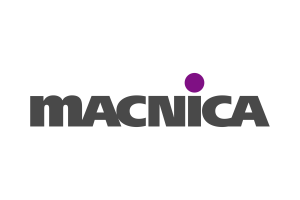Industry 4.0 in EMS
»The step from 3.9 to 4.0 will remain individual«
Fortsetzung des Artikels von Teil 1
Learning from the agricultural world?

Wolfgang Peter, Business Development at Elektron, also sees concrete opportunities for increasing efficiency through Industry 4.0 in the networking of machines and in logistics. Elektron also developed the component counter used by Asteelflash, for example, with which an efficiency increase of 10 percent can be achieved compared to a manual process: “In the logistics processes involved in material handling connected to the core process of assembly, there is still room for improvement and here Industry 4.0 helps us to achieve greater efficiency”. According to Peter, this does not mean, however, that fewer personnel are needed, but that personnel can be deployed for more advanced activities and not for monotonous logistics processes.
Johann Weber, CEO of Zollner Elektronik, broadens the concept of Industry 4.0 towards digital transformation. There are many topics that can be classified as digital transformation: For example, traceability with the help of a Manufacturing Execution System (MES) or the connection of suppliers via EDI or other platforms, up to the use of artificial intelligence in manufacturing or related processes.
“No matter in which how you describe Industry 4.0, the fact is you have to face up to the interlinking of machines”, Gerd Ohl, Managing Director of Limtronik, is convinced. “Because Track & Trace is going to become an important factor throughout the entire supply chain, and we can only cope with this if we have already created the conditions in the factory.” As a founding member and demo factory of Smart Electronic Factory e. V., an association of companies and research institutions, Limtronik is counted as one of those electronics service providers who adapted Industry 4.0 from the very beginning and now operate at a very high stage of expansion, including big data analysis and automatic feedback to the manufacturing processes.

Which Industry 4.0 “expansion stage” an electronics service provider achieves naturally also depends on its personnel and financial resources. Industry 4.0, digitalization and networking of machines and processes, are not ends in themselves, but must bring corresponding benefits to the manufacturing company. The introduction of an MES alone costs a substantial amount of money. “However, we clearly considered what goals we wanted to achieve with it,” comments Marco Balling, Managing Director of productware, on the recent introduction of his MES. Internally, Balling plans to increase quality and productivity, but there are also goals related to new services the company wants to offer its customers. “Spending money simply because it is ‘chic’ would not support this objective,” Balling emphasizes. He sees significant improvements in traceability, for example, as a result of the MES, since it is becoming increasingly difficult to control work processes purely with workbooks.
An MES generates real-time information on the basis of which it is possible to intervene directly in the production process. For a long time, communication between machines in an SMT line was virtually impossible or only possible uni-directionally without MES. In 2016, a consortium of SMT machine builders, including ASM Assembly Systems and Rehm Thermal Systems, established the Hermes standard as a bidirectional M2M interface for the SMT industry. Since August, the standard has also been recognized by the IPC and is officially known as IPC-SMEMA-9851. Those who choose to use an MES do not necessarily need the bidirectional communication of their SMT machines, since the MES translates different languages in the line meaning that existing equipment can be networked via the MES. However, the introduction of an MES is not only expensive, but also complex. “With our MES, we have enormous possibilities, but we can only implement it in stages, because otherwise it would go beyond the resources of organization,” Balling points out. “This isn‘t a three-month project to get fully digitalized,“ but rather long a path we‘re taking”.
Despite of all the successes of Industry 4.0 in the field of electronics manufacturing, Gerd Ohl and Bernd Enser believe that it is still important to remove one’s blinkers and allow oneself to be inspired by other industries, as both demonstrate with the example from agriculture: In theory, every single cow can be tracked right down to the last schnitzel. “Why does this work in agriculture but not for us?” This is a very good question, the answer to which probably (also) lies in the complexity and globality of the supply chain.
“Rome wasn‘t built in a day either”
After an hour-long discussion on this topic, it becomes clear that every company must find its own path and define its own goals. There will be no “Industry 4.0 fits all”. After all, the starting point is different for everyone. “It makes a difference whether I‘ve been on the market for 30 years or whether I‘m building from a greenfield site. You can‘t just throw everything over”, Balling points out. In fact that is not necessary, because even if Industry 4.0 is freely interpreted, the results of the discussion show that the Smart Factory is already a reality in many manifestations and is on the right track in many places, even if there is still room for improvement. “After all, Rome wasn‘t built in a day,” Weber sums up.
- »The step from 3.9 to 4.0 will remain individual«
- Learning from the agricultural world?









